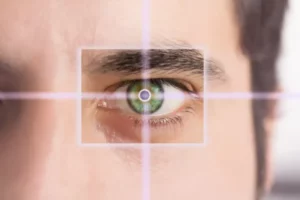When it comes to vision correction, the options can sometimes seem overwhelming. But among the standout choices, “Contoura vs. EPI Contoura Procedures” has been a buzzing topic. If you’ve found yourself caught in the crosshairs of this debate, you’re in the right place. In this comprehensive guide, we’ll unravel the intricate differences between these two leading-edge laser techniques. From understanding their foundational principles to diving into their recovery timelines and costs, we’ve got you covered. Ready to see things more clearly? Let’s delve in and demystify the distinctions.
Contents
The Science Behind Contoura Vision
 Contoura Vision, often heralded as a breakthrough in refractive surgery, operates on a unique principle. At its core, this technique leverages a flap-based approach. But what does that really mean?
Contoura Vision, often heralded as a breakthrough in refractive surgery, operates on a unique principle. At its core, this technique leverages a flap-based approach. But what does that really mean?
- Flap Creation with Femtosecond Laser: The first step in the Contoura procedure is the creation of a thin, superficial flap on the cornea. This is achieved using a highly precise femtosecond laser. The laser emits ultra-fast pulses, carving out a flap without generating heat or causing damage to the surrounding tissue.
- Reshaping with Excimer Laser: Once the flap is created and gently lifted, the underlying corneal tissue is exposed. Here’s where the magic happens. An excimer laser, known for its cool ultraviolet beam, is used to delicately reshape the cornea. This laser ablation addresses the refractive errors, ensuring the light entering the eye focuses accurately on the retina.
- Flap Repositioning: Post-ablation, the flap, which acts as a natural protective bandage, is repositioned onto the treated area. The healing starts almost immediately, leading to rapid visual recovery.
In essence, Contoura Vision combines the precision of the femtosecond laser with the corrective capability of the excimer laser, offering a comprehensive solution to vision issues.
EPI Contoura: A Closer Look
 EPI Contoura is a remarkable advancement in the field of refractive surgery, and what sets it apart is its flapless approach. Let’s delve into the intricacies of this innovative procedure.
EPI Contoura is a remarkable advancement in the field of refractive surgery, and what sets it apart is its flapless approach. Let’s delve into the intricacies of this innovative procedure.
- Flapless Technique: Unlike traditional Contoura Vision, which involves creating a thin flap on the cornea, EPI Contoura is entirely flapless. This means no surgical incisions are made, and the corneal surface remains intact throughout the procedure.
- Direct Corneal Reshaping: Instead of working beneath a corneal flap, EPI Contoura directly addresses the corneal surface. The procedure begins with mapping the unique imperfections in the cornea’s curvature. High-precision lasers are then employed to reshape the cornea with incredible accuracy. By removing minuscule amounts of tissue from the corneal surface, light rays entering the eye can be accurately focused on the retina.
- Swift Recovery: One of the standout features of EPI Contoura is its rapid recovery time. Since there is no flap involved, healing is often faster compared to flap-based techniques. Many patients experience improved vision within a day or two.
- Minimized Risk: EPI Contoura minimizes the risk associated with flap-related complications, making it a preferred choice for individuals concerned about potential flap-related issues.
In essence, EPI Contoura’s flapless approach combines advanced corneal mapping with precise laser technology to reshape the eye’s surface, offering excellent vision correction results with minimal downtime and risk.
Comparative Recovery Times
Understanding the recovery times associated with Contoura and EPI Contoura procedures is essential when considering your vision correction options. Let’s take a closer look at how these two techniques compare in terms of healing and downtime:
Contoura Vision (Flap-Based)
Recovery after Contoura Vision is notably swift. Many patients experience significant improvement in their vision within the first 24 hours following the procedure. It’s not uncommon for individuals to return to their regular activities, including work, within a couple of days after Contoura.
EPI Contoura (Flapless)
EPI Contoura stands out with its relatively quick healing process. While recovery times can vary from person to person, most EPI Contoura patients can expect to regain clear vision within one to two weeks post-surgery. This is due to the absence of a corneal flap, which typically results in less discomfort and a faster healing response.
In summary, both Contoura and EPI Contoura offer relatively short recovery times compared to older vision correction techniques. While Contoura boasts a swift 24-hour recovery, EPI Contoura’s one to two-week healing period is still considered rapid, making it an attractive option for those seeking minimal downtime.
Safety Measures and Risks
When considering vision correction procedures like Contoura and EPI Contoura, safety is a paramount concern. Let’s explore the safety measures in place for both techniques and understand the associated risks:
Contoura Vision (Flap-Based)
Contoura Vision, while highly effective, involves the creation of a thin corneal flap during the procedure. Although advancements in technology have significantly reduced the risk of flap-related complications, there’s still a minimal chance of issues like flap dislodgement or inflammation. However, it’s essential to note that such complications are rare and can often be managed effectively if they do occur.
EPI Contoura (Flapless)
EPI Contoura sets itself apart by being a flapless procedure. This key distinction eliminates the risks associated with corneal flaps altogether, making EPI Contoura an appealing choice for individuals concerned about potential flap-related complications. The absence of a flap minimizes the chances of issues like flap dislodgement, infection under the flap, or irregular healing.
As with any surgical procedure, there are some inherent risks involved in both Contoura and EPI Contoura, such as infection, dry eyes, and nighttime glare. However, these risks are generally low and can be mitigated through careful pre-operative evaluation and post-operative care.
In conclusion, EPI Contoura stands out for its enhanced safety profile due to the absence of flap-related complications. While Contoura Vision is also safe, patients may opt for EPI Contoura if they seek additional peace of mind regarding potential risks associated with flap creation.
Criteria for Candidate Selection
When choosing between Contoura and EPI Contoura, several factors come into play to determine the most suitable procedure for a patient. Here are the key criteria:
- Refractive Error Severity: Contoura and EPI Contoura are both effective in treating a wide range of refractive errors, including nearsightedness (myopia), farsightedness (hyperopia), and astigmatism. However, the severity of these refractive errors may influence the choice of procedure. EPI Contoura is often preferred when refractive errors are more pronounced.
- Corneal Thickness: Corneal thickness is a crucial consideration. Contoura typically requires a thicker cornea, making it suitable for individuals with ample corneal tissue. In contrast, EPI Contoura, being flapless, may be a better option for those with thinner corneas, as it preserves more of the corneal tissue.
- Age and Stability: Patient age and the stability of their refractive error play a role. Contoura is commonly chosen for younger patients with stable prescriptions, while EPI Contoura may be recommended for older individuals or those with fluctuating prescriptions.
- Flap-Related Concerns: Patients who have concerns about potential flap-related complications, no matter how rare, may lean toward EPI Contoura for its flapless nature. This eliminates the risk of flap dislodgement or inflammation associated with Contoura.
- Lifestyle and Visual Needs: Personal lifestyle and visual needs also factor in. Patients with active lifestyles or professions that involve contact sports or dusty environments may find EPI Contoura more suitable due to its reduced vulnerability to flap-related issues.
In summary, the choice between Contoura and EPI Contoura depends on various factors unique to each patient. It’s crucial to consult with an experienced eye surgeon who can conduct a thorough evaluation and recommend the most appropriate procedure based on individual needs and circumstances.
Cost Analysis: Contoura vs. EPI Contoura
 Making an informed decision about vision correction surgery involves considering the financial aspects. Here’s a detailed cost analysis for Contoura and EPI Contoura procedures:
Making an informed decision about vision correction surgery involves considering the financial aspects. Here’s a detailed cost analysis for Contoura and EPI Contoura procedures:
- Contoura Vision:
- Cost per Eye: ₹25,000
- Total Cost for Both Eyes: ₹50,000
- Additional Costs: It’s essential to account for potential additional costs, such as pre-operative evaluations, post-operative medications, and follow-up visits. These can vary depending on the clinic and location.
- EPI Contoura:
- Cost per Eye: ₹35,000
- Total Cost for Both Eyes: ₹70,000
- Additional Costs: As with Contoura, consider extra expenses like pre-surgery assessments, post-surgery medications, and follow-up appointments.
Factors Affecting Costs:
- The severity of your refractive error can influence the final cost. More significant corrections may require additional procedures or adjustments.
- The reputation and location of the surgical center or clinic can also affect prices. Facilities in metropolitan areas may have higher costs.
- Keep in mind that these prices are approximate, and they may vary depending on individual factors and the specific requirements of your surgery.
Investing in Clear Vision: While Contoura and EPI Contoura come with different price tags, both procedures offer the promise of improved vision and reduced dependency on glasses or contact lenses. It’s important to consider your visual needs, lifestyle, and budget when making your decision.
Conclusion
In the journey to achieve clear vision and bid farewell to glasses or contact lenses, you’ve explored the distinctions between Contoura and EPI Contoura procedures. Both of these advanced techniques offer the potential for improved eyesight and a glasses-free future.
As you weigh the differences in technology, recovery times, safety measures, and costs, remember that the decision ultimately depends on your unique needs and preferences. To make an informed choice, consult with an experienced eye surgeon who can assess your specific situation and recommend the most suitable option.
At EyeMantra, we’re committed to helping you experience the freedom of clear vision. Our team of skilled professionals is ready to guide you through the process and provide the care you deserve. Don’t let refractive errors hold you back; take the first step towards clearer vision today.
Book your free appointment now at 9711116605 and embark on the path to a brighter, glasses-free future with Lasik Surgery at EyeMantra.



